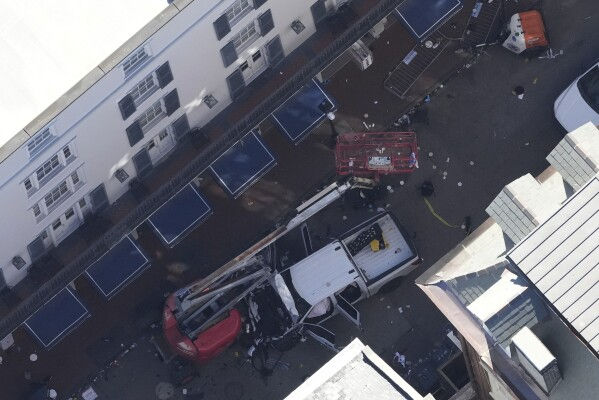Terrorist Attack in New Orleans: Multiple Casualties Reported
- Eight Point Solutions News Room

- Jan 2
- 3 min read
Updated: Mar 29

New Orleans, LA—A horrific terrorist attack in New Orleans unfolded in New Orleans’ iconic French Quarter during New Year’s celebrations, leaving multiple casualties and prompting heightened security measures across the city. The assailant, identified as Shamsud-Din Jabbar, a 42-year-old U.S. Army veteran reportedly inspired by the Islamic State (ISIS), drove a pickup truck into a crowd on Bourbon Street before engaging in a firefight with police.
Incident Overview
The attack occurred shortly after midnight, as revelers filled the streets to celebrate the arrival of 2025. According to law enforcement, Jabbar drove his vehicle at high speed into a dense crowd, causing chaos and destruction in the historic French Quarter. After crashing his truck, the attacker exited the vehicle and opened fire on responding officers. Law enforcement neutralized Jabbar at the scene.
A search of the truck revealed firearms, improvised explosive devices (IEDs), and an ISIS flag. Officials believe the attack was premeditated and intended to cause maximum harm. Emergency responders were dispatched immediately, treating the injured and evacuating the area. Law enforcement has since secured the French Quarter, but several nearby locations remain under lockdown as investigations continue.
Investigation and Security Response
The FBI is leading the investigation into what it has classified as an act of terrorism. Authorities are exploring whether Jabbar acted alone or as part of a larger network. Surveillance footage suggests other individuals may have planted explosive devices in surrounding areas, prompting a citywide search for accomplices.
Bomb squads have neutralized several IEDs discovered near the site of the attack, and sweeps are ongoing. Officials have urged residents to remain vigilant and avoid public gatherings until further notice. Several events, including the Sugar Bowl college football game, have been postponed as a precaution.
New Orleans Mayor LaToya Cantrell declared a state of emergency, stating, “This attack on our city is a tragedy, but we are resilient, and we will recover together. Our focus remains on ensuring the safety of our residents and visitors.”
Political and Community Reactions
President Joe Biden condemned the attack as a “heinous act of violence,” pledging federal support for the investigation and assistance to victims and their families. “The United States will not be intimidated by acts of terror. We stand united against hatred and violence,” Biden stated in an address from the White House.
President-elect Donald Trump issued a separate statement, blaming what he called “weak national security policies” for the attack. He vowed to make counterterrorism a priority upon taking office later this month, signaling potential shifts in immigration and domestic security policies.
Community leaders in New Orleans have organized vigils to honor the victims, with many emphasizing unity and resilience in the face of tragedy. Local businesses are working with city officials to provide resources to those affected, while non-profits and volunteers have mobilized to support recovery efforts.
Broader Implications
The attack highlights ongoing concerns about domestic terrorism and the evolving nature of extremist threats in the U.S. It underscores vulnerabilities in public spaces and the need for robust security measures during large-scale events. For executives and decision-makers, the incident serves as a stark reminder to revisit risk management strategies and assess the adequacy of crisis response plans.
From an international perspective, the attack could influence global counterterrorism strategies. Analysts warn that groups like ISIS may exploit geopolitical tensions and domestic vulnerabilities to inspire further attacks. Cooperation between nations will be critical in addressing these threats.
Key Takeaways for Leaders
Review Security Protocols: Businesses and organizations should evaluate their security measures, particularly in high-traffic public venues, to mitigate risks.
Crisis Management Preparedness: Ensure that emergency response plans are comprehensive and include procedures for handling terrorist incidents.
Community Support: Support initiatives that aid victims and contribute to rebuilding trust and resilience in affected communities.



Comments